
Guiding the Energy and Materials Sectors through Uncertainty
Designing a strategy that is robust under a range of future scenarios can help energy and materials companies create value in volatile times.
In these unpredictable times, an adaptable strategy can equip energy and materials companies to generate value. The energy and materials sector is inherently intricate, with the complexities and uncertainties now multiplying at an exponential rate. This environment is reshaped not only by traditional risks such as geopolitics and evolving regulations but also by the dawn of a sustainable, low-carbon future teeming with both challenges and possibilities.
As we transition, the petrochemical industry grapples with diminishing its carbon impact, while materials firms explore unique products that champion green attributes. Novel markets might necessitate fresh business frameworks. As seen in the budding hydrogen economy, cross-chain collaborations are accelerating success, and in the minerals arena, partnerships between companies and clients like Original Equipment Manufacturers (OEMs) are driving innovation. A noticeable pivot from a commodity-focused approach to a specialty product- and value-based one is underway.
Sustainability—a critical yet multifaceted subject for energy and materials firms—demands an enhanced ability to separate significant market shifts from the industry chatter. Modern investors seek beyond promises and goals; they require leaders to craft tangible strategies and show a consistent history of capturing value amidst the rapid transition.
So, what's crucial to help leaders gain confidence to define a path and act? We propose adopting what we call the "strategy under uncertainty" method.
This approach entails a more detailed scenario-based strategy formulation process. Drawing from our experience, and that of our peers, with top-tier energy and materials companies, we've developed a comprehensive process for strategizing and reallocating capital. This process empowers companies to better navigate cyclicality, market complexity, regulatory change, and trends like material substitution and commoditization.
Mastering this approach offers a dual payoff: firstly, it should lead to a more resilient strategy under various future scenarios; secondly, it's likely to be perceived as value-creating by capital markets, leading to higher valuations.
In this piece, we spotlight three stages that encapsulate vital components of our more intricate strategic process. Specifically, these steps assist business leaders in the energy and materials sectors in identifying which opportunities to pursue, how to penetrate new markets, and when to act.
What to Follow: A Closer Examination
Classic strategy tenets reveal that the most rewarding opportunities are often unique to a company, as they leverage its distinct advantages. A detailed view can link opportunities to internal capabilities and help companies evaluate the value at stake. This can be done by considering risks to the core business portfolio, opportunities for decarbonization and resource efficiency, possibilities for attracting premiums, and the potential for scaling new green businesses.
When it comes to assessing demand and understanding customers' sustainability preferences, factors such as customers' willingness to pay for sustainable offerings, regional or environmental, social, and governance (ESG) premiums, addressable volume, timing, and policy impact should be taken into account. On the supply side, considerations should include material and feedstock availability, procurement economics, initial investment, and technology maturity and scalability.
A close examination of Fortune 1000 companies in hard-to-abate sectors shows how investments in the energy and materials transition can boost both revenues and profits. Companies with strong exposure to sustainability-linked markets, such as bio-based ingredients, uranium for nuclear energy, or lithium for batteries, enjoy valuation premiums.
How to Enter: Incorporate Uncertainty in Strategic Choices
Once opportunities have been identified and evaluated, companies can categorize these into three types of strategic decisions, balancing sources of uncertainty, costs, potential for monetization, timeline, and risk:
No-regret moves. These are opportunities that add value in most scenarios and can be acted upon at any time.
Shaping moves. These include strategic decisions that need to be made in advance in the face of uncertainty and cannot be easily reversed without financial or reputational implications. Minor actions and investments—such as capability building, minority-stake investments, and carbon reporting—can help mitigate risks associated with shaping moves and maintain the right to act later.
Future moves. These encompass scenario-dependent decisions that would be activated by specific circumstances.
In achieving recognition from capital markets for creating value through sustainability, companies need to show that they have transformed a sustainability-related proposition into a scalable margin advantage. Rerating may take time, but having a significant part of the overall business portfolio in green investments can signal to investors that sustainability is a core strategic priority with a clear path to scale.
In the energy transition, creating a sustainable advantage that can support margins over time is challenging. There are three approaches companies can take to do so. A robust ESG proposition can also create value by helping companies tap into new markets, reduce costs, and minimize legal and regulatory interventions.
Companies can mitigate market entry risks by rethinking business models across an ecosystem. An ecosystem of partnerships often distributes risk and reward among participants, sharing the risk posed by uncertain price points, materials availability, technology readiness, and evolving policy while ensuring access to potentially volatile or scarce segments of the value chain.
When to Act: Spot Potential Signposts and Trigger Points
Signposts are strategic markers indicating when a company should consider investing or divesting from a market, segment, or product. They can also indicate the right time to escalate investments or convert strategic positioning moves into shaping moves.
Trigger points define the conditions under which an organization is prepared to act and which market conditions would alter the strategic direction of the company.
Monitoring fewer but well-defined, high-quality signposts generally aids decision-making more than tracking many ill-defined ones. For example, signposts related to energy-transition scenarios could include the percentage of electric vehicle sales or the share of alternative fuels used in aviation.
While a blanket "wait and see" approach might seem comforting in uncertainty, it carries risks. Without decisive action, companies could lose control points along the value chain as competitors secure their positions. Companies could also miss a window of opportunity due to long lead times for project delivery. An "act and adjust" approach may be more prudent.
Large-scale portfolio changes take time, especially for organizations with substantial legacy businesses. But time is of the essence. For energy and materials companies to create value in volatile times, it's crucial to make shaping moves now and respond swiftly and deliberately if trigger points are met.
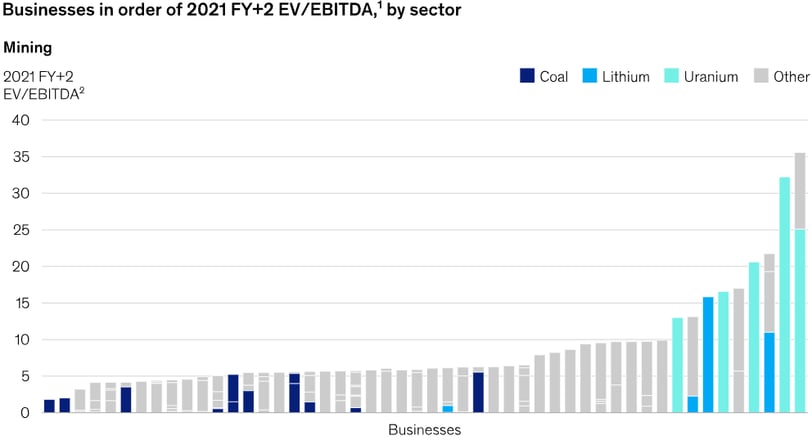

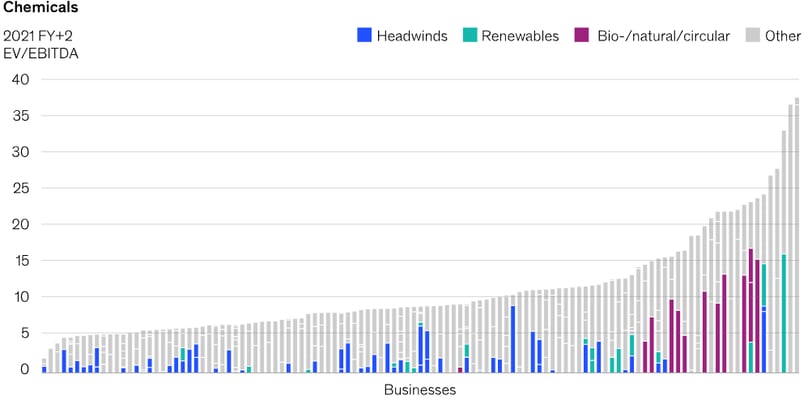

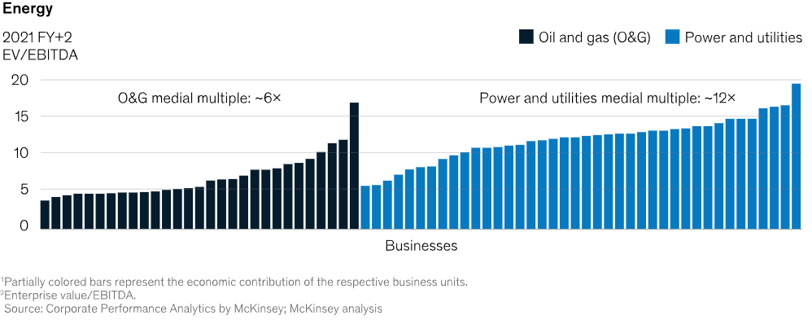

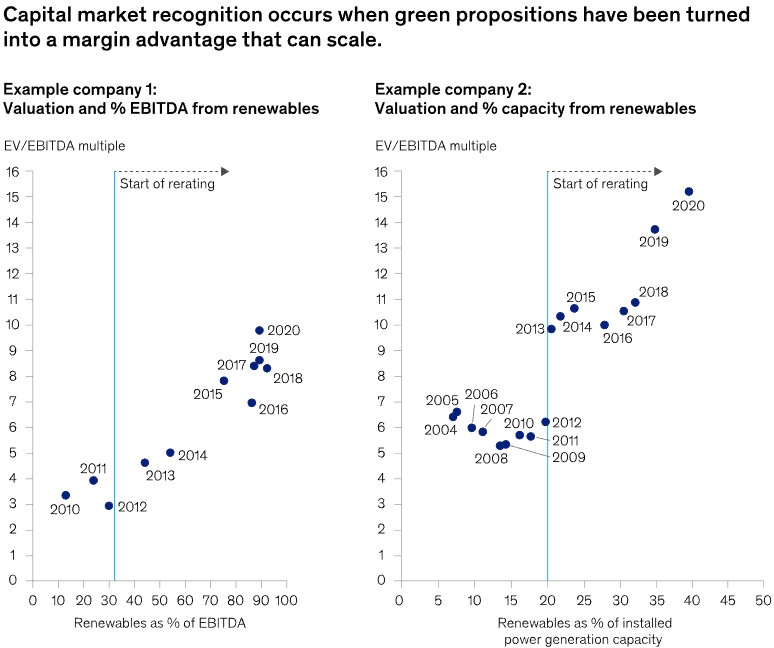

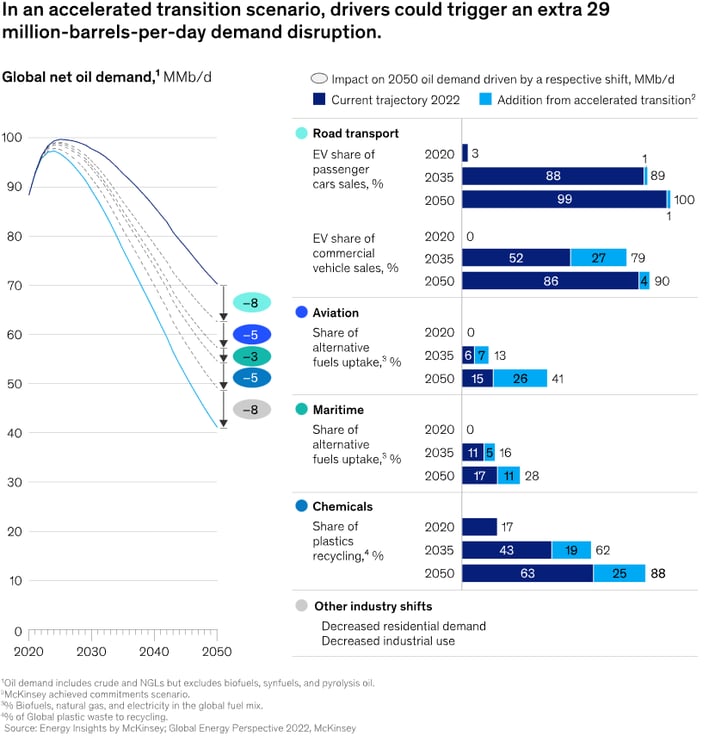

Talk to Us

